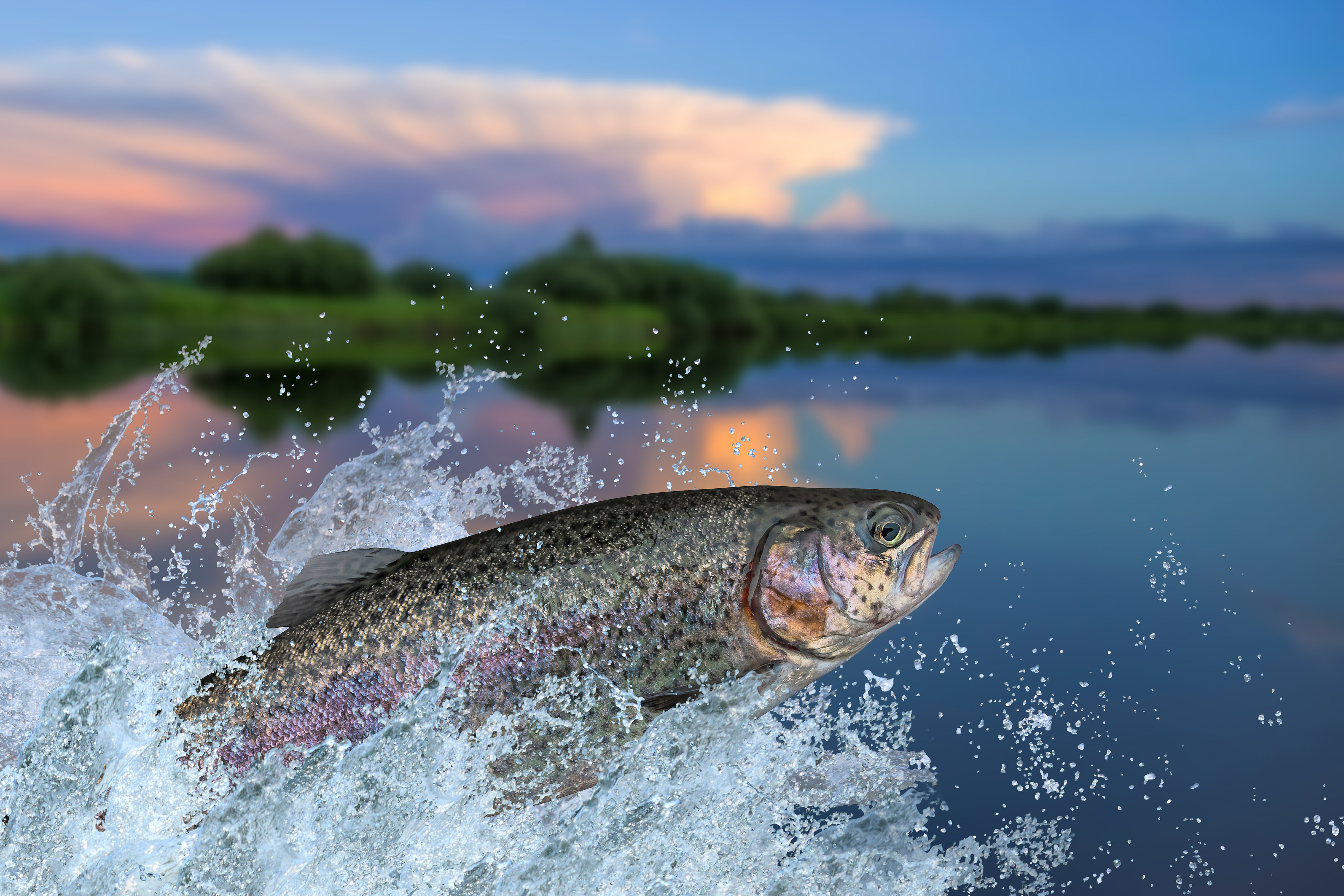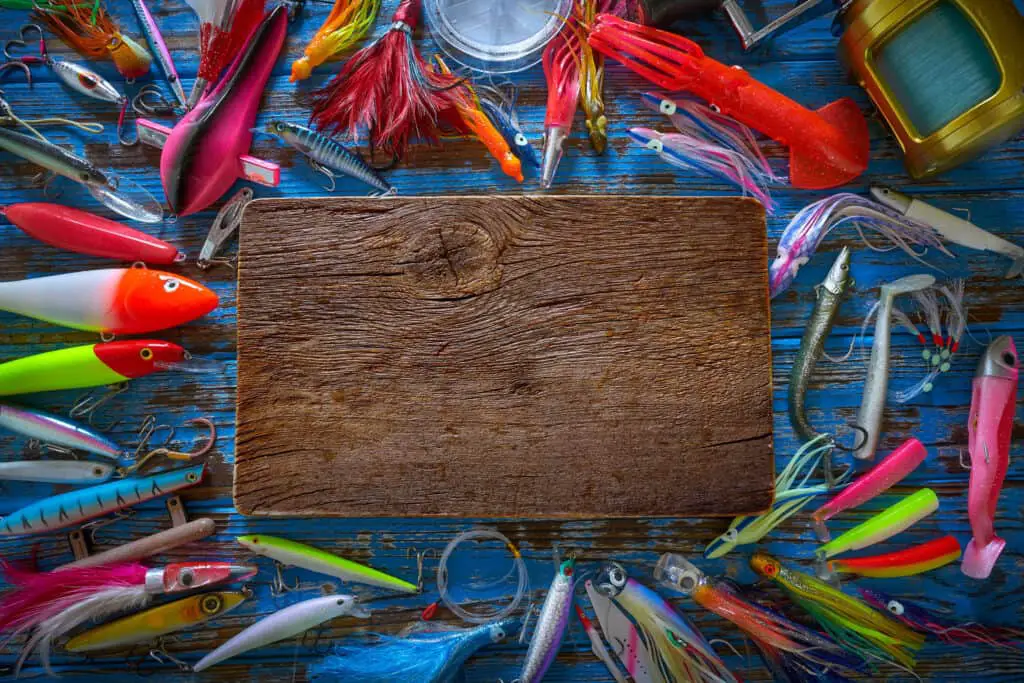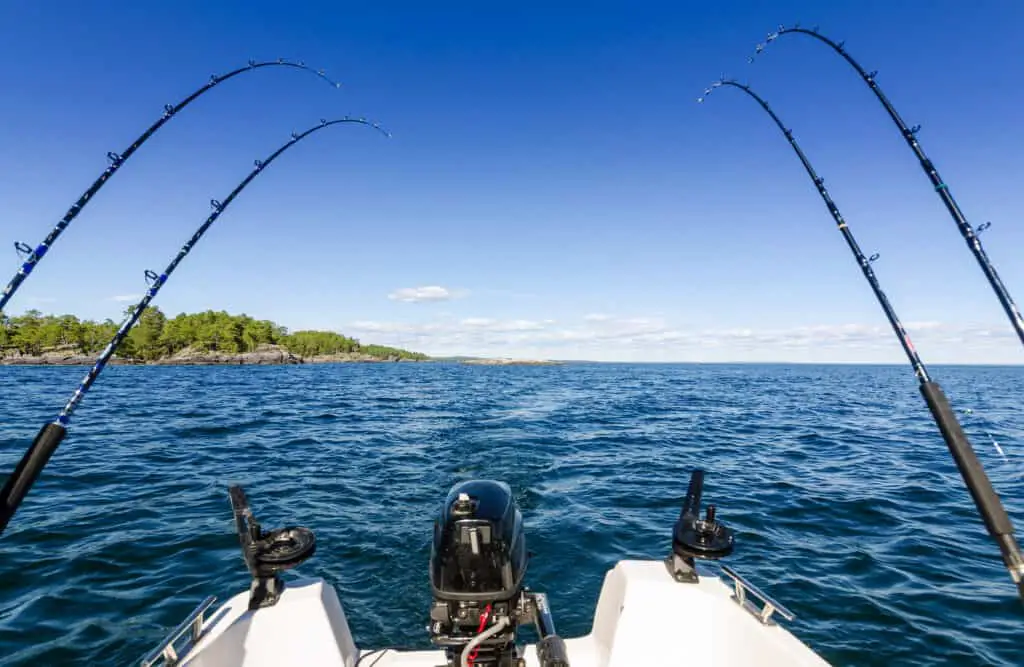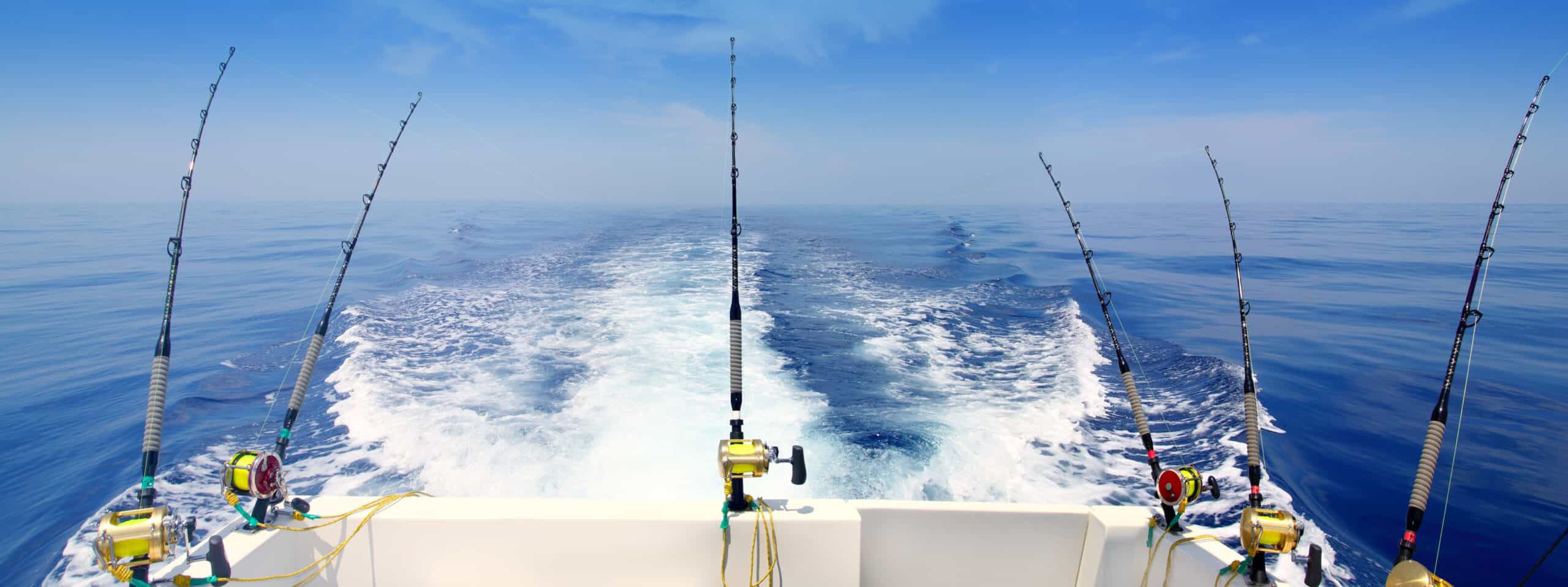Trolling is a very popular pastime in the summer and it often leads to a big catch by the end of the day. However, the speed that you go while trolling matters quite a bit. So what is the best speed to go while trolling?
It is best to go 1.5-2.5 miles per hour while trolling. While trolling, people can go up to 10 miles per hour or more, but those speeds are rarely necessary. Use a trolling speed indicator to monitor the speed of the boat at all times. The exact speed needed varies on the species of fish.
Now that you know about how fast you need to go in order to successfully go trolling, you may be wondering what speed you need to go at while trolling fish like bass, walleye, and trout. All fish might be caught at different speeds, so it’s important to know each one’s preferences.
Best Trolling Speeds for Various Fish Species
Bass
When you are trolling for bass, you will want to go 2-4 miles per hour. Start slow, but then go faster if you do not manage to catch any bass after a long period of time.
Walleye
When you are trolling for walleye, you will want to go 1.3-2 miles per hour. When trolling for walleye, keep in mind what the season is and how warm the weather is. Walleye are more active when the weather is warm, so if you are trolling in the spring you will want to go 1.3-1.5 miles per hour, and in the summer you will want to go 1.5-2 miles per hour.
Trout
When you go trolling for trout, you will want to go 1.5-2.5 miles per hour. Trout tend to be caught by trollers who go at low speeds rather than high ones, so you will rarely need to go 2 miles per hour while trolling for trout. However, trout are more active in the summer months, so you can go a bit faster during the hottest season of the year. Although most trout can be trolled at similar speeds, lake trout need to be trolled at slightly different speeds than other trout.

Lake Trout
When you go trolling for lake trout you will want to go 1.7-2.0 miles per hour. Lake trout prefer slower trolling speeds, especially during the winter when it is cold, so the slower you go, the more lake trout you will catch.
Kokanee
When you are going trolling for kokanee, you will need to go .8-2.0 miles per hour. Kokanee tends to be caught when people are trolling at higher speeds rather than slower speeds. The ideal speed that you should go while you are trolling for kokanee is 1.8 miles per hour.
Pike
When you go trolling for pike you will need to go very slowly. You will need to go 1.5 miles per hour or slower. Pike tend to stay near ledges, river channels, and weed-dense areas. If you go too quickly, the pike will not notice the lures on your fishing line, and you will not catch very many fish. If you have been trolling for a few hours and have not caught any pike, try slowing down and see if that helps.
Salmon
When you go trolling for salmon you will want to go 1.5-3.5 miles per hour. If you see a lot of salmon near the surface of the water where you are trolling, then you will want to go closer to 3.5 miles per hour. However, if you do not see or do not think that there are many salmon that are close to the surface of the water, you will want to go about 1.5 miles per hour because the lure will sink deeper into the water at these speeds. That way, the salmon that are deep under the water will be able to see the lures on your fishing line. You will usually catch a lot of deep-water salmon if you go slower.
Tuna
When you are going trolling for tuna, you will want to go 5-8.5 miles per hour. If the water is really cold while you are trolling, you will want to go slower and use slightly heavier lures in order to catch the attention of more tuna. However, when the water is warmer, you can go slightly faster and use slightly lighter lures as the tuna will be more active and hungry, and therefore need less persuasion to eat a fast-moving source of food.
What Are the Best Trolling Speeds for Various Lures?

Although the speed that you should go changes based on what fish species you want to go trolling for, the speed that you need to go also changes based on the type of lure you are using.
Spoon Lures
When you go trolling and use a spoon lure at the end of your fishing line, you will need to go 1-2 miles per hour. The flashing of the lure will attract salmon, trout, walleye, and largemouth bass, but the flashing of the lure needs to be seen by the fish before they can be caught, so you need to be going slow enough for the swim to see the lure and swim to it. The slower you go, the more likely you are to catch a lot of fish.
Crankbait Lures
When you are trolling and are using a crankbait lure at the end of your fishing line, you need to go 1.5-3 miles per hour. The crankbait lure is very versatile and will allow you to catch many fish, but it does require you to go at slow speeds while using it.
Spinner Lures
When you use a spinner lure at the end of your fishing line, you need to go 1.2-1.5 miles per hour. Spinner lures attract lots of fish, but they spin and only need a small amount of force in order to do so, so you need to go slowly when you use spinner lures.
Plunger Lure
Plunger lures are great for trolling and are great to use when you want to move at high speeds. When you are using a plunger lure, you need to go 8-11 miles per hour. Plunger lures are great options to use when you are trolling for larger fish that swim deep in the water. Plunger lures can be used to catch Mahi Mahi, marlin, sailfish, and tuna.
Should I Use a GPS to Determine Trolling Speed?
You should not use a GPS to tell how fast you are going while you are trolling. GPS systems are typically used to tell you where you need to go while you are on land and are not typically meant to be used to tell you how fast you are going on the water, especially when the currents are strong. Many GPS systems don’t even tell you how fast you are going while you are on land, they just tell you where you need to turn in order to get to your destination.
Instead of using a GPS on your boat while you are trolling, use a troll speed indicator. If you do not want to use one of these, use the speedometer that is already installed on your boat.
Troll speed indicators are very useful but are typically somewhat expensive. Troll speed indicators range in price from $75 to $150 or more if the troll speed indicator has many extra features that are included.
If you have a GPS and want to use it to figure out how fast you are going while you are trolling, set it next to your boat’s speedometer or compare it to your trolling speed indicator while you are moving. If the speed that your GPS is telling you is similar to the speed that your boat’s speedometer or your troll speed indicator is telling you, then you can continue to use your GPS to tell you how fast your boat is going. However, it will likely be easier to simply use your boat’s speedometer because it is already installed on your boat, and you do not have to purchase any more equipment.
Frequently check how fast you are going while you are trolling. The speed that your boat is moving at heavily influences what fish you will catch, as well as how many you will catch. As you can see in the section above, each fish species can be caught at slightly different speeds.
Should I Stop While Trolling to Unhook Fish?
You should not stop your boat to unhook the fish you have caught while you are going trolling. If you stop your boat every time you catch a fish, you will end up stopping very frequently. This start and stop movement will cause the lures to stop moving, which will make the fish think that the lure is not food. Overall, stopping too often will cause you to catch fewer fish than you may want to.
This means that your trolling efforts will be nearly fruitless. In addition, the frequent start and stop movement of your boat will also be very hard on the motor. If you are consistently hard on the motor of your boat, it will stop working and you won’t be able to go trolling, even if you really enjoy it and typically catch a lot of fish. The motors on boats can be very expensive to fix, and you may have to replace them entirely. It is best to just keep the boat moving while you are trolling.
One good thing about trolling is that you can do many things while you are moving if you have multiple people on board. You can do things like unhook the fish that you have caught and then quickly place the lure back into the water. While you are trolling, you can also eat, drink, talk to other people, and adjust the lengths of the fishing lines that are trailing behind the boat. This laid-back atmosphere is why many people prefer trolling over other fishing methods.
When you go trolling, don’t go in a straight line. If you go in zig-zags, you will attract lots of fish to your lures and you will generally catch more. You should also go at various speeds throughout your trip so you can attract as many fish as you can.
You should only stop the boat while you are going trolling when you are done for the day. You can stop the boat so you can remove the lures from the water because it is easier to do so while the boat is stopped, especially when you need to remove multiple lures from the water.

How Many People Should I Go Trolling With?
Theoretically, you can go trolling with as many people as you want to, as long as the boat will fit all of you at one time comfortably. However, you should typically only go trolling with 2-3 people at a time. You need one person to drive the boat and one or two people to stay at the back of the boat so they can remove the fish that are caught while the boat is still moving. If you have two people that are sitting in the back of the boat, you can have at least 4 fishing lines running at once, which means you can catch more fish.
If you do want to go trolling with a lot of people, take more than one boat. This will allow you to catch more fish than you would be able to with just one boat, and the back of the boat will not be weighed down by a lot of people. If you take multiple boats while you go trolling, everyone can sit comfortably wherever they want in the boat, which will make the whole trolling experience better and more memorable.
Trolling with friends can be a great way to spend time together, get outside, and catch a lot of fish! Choosing the right speed will ensure that you can attract the type of fish you’re looking for.

